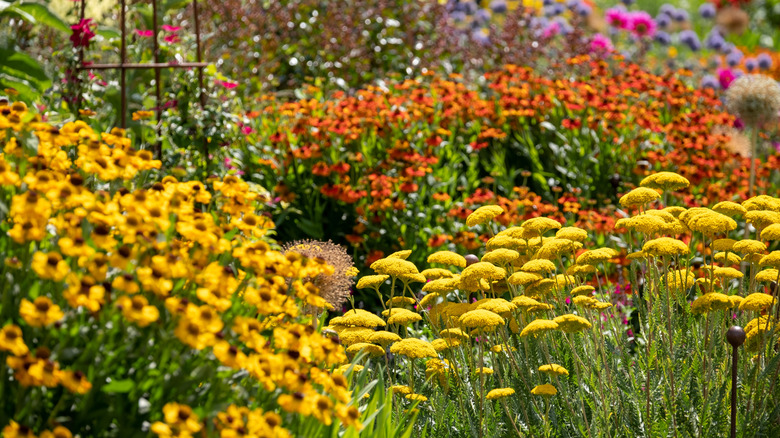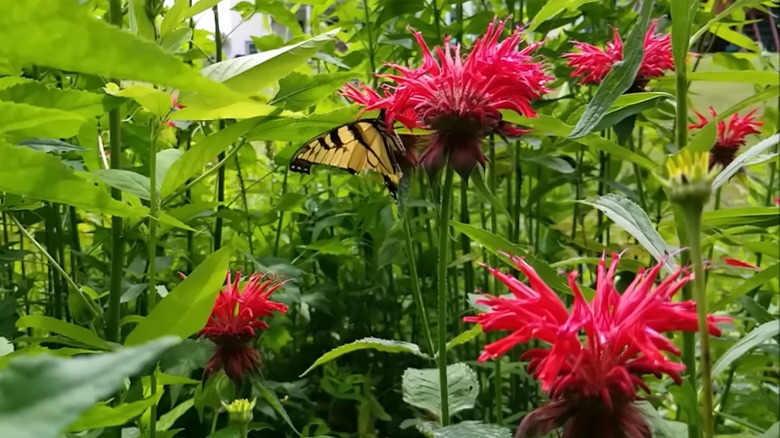The Flowering Shrub You Should Prune In October For Better Spring Growth
Both gardeners and pollinators love bee balm. When you're growing one of the two most common cultivars, scarlet bee balm (Monarda didyma) or wild bergamot (Monarda fistulosa), you may have noticed that bee balm plants have a little bit of a wild side. A member of the Mint Family, bee balm likes to grow bushy and abundantly, spreading via underground stolon to form dense clumps. When it comes to bee balm, which grows in USDA hardiness zones 3 through 9, October is one of the most important times of the year for pruning, since it helps keep plants compact and prevents powdery mildew. This will ensure that your plants come back with fresh, healthy growth the following spring.
After blooming for up to eight weeks from early summer, bee balm can look a little unruly by August. However, if you've encouraged bushy growth in the spring and kept bee balm flowers deadheaded, you should benefit from blooms into the fall. Once October comes, bee balm plants are ready to be trimmed back to about 8 to 10 inches tall. If they have powdery mildew, cut them all the way back to the ground. Bee balm is susceptible to this disease, which spreads more easily in cool, damp weather. Growing bee balm in a sunny spot with plenty of air flow is the best remedy, or you can try growing disease-resistant cultivars like 'Raspberry Wine'.
Pruning and caring for bee balm in the fall
Bee balm plants respond well to seasonal maintenance in the fall. In addition to pruning or cutting them right back, chores like dividing crowded plants promote a healthier garden in the spring. Continue to water bee balm plants throughout October, especially if there's no rain. Many people wonder if it's necessary to water plants in the fall, but it's still important if the soil is dry. Established bee balm plants should be watered deeply but infrequently during dry spells throughout the year, preferably without getting their leaves wet.
To prevent bee balm from taking over your garden, give it the space it needs by dividing it in the fall. Dividing bee balm every few years encourages lush, healthy growth from the center of the plant. Replant the healthiest sections, and discard the rest. Or, you could pot up a few, place them in a protected spot over winter, and then give the plants away to friends once they start to regrow in the spring.
After pruning and dividing bee balm, clearing away old foliage can reduce disease risk. Applying a light layer of straw mulch can protect the roots without providing increased risk of powdery mildew. And if you prefer, you wouldn't be alone if you decided to leave some of the old growth on the plant over winter to provide shelter for insects and birds.

